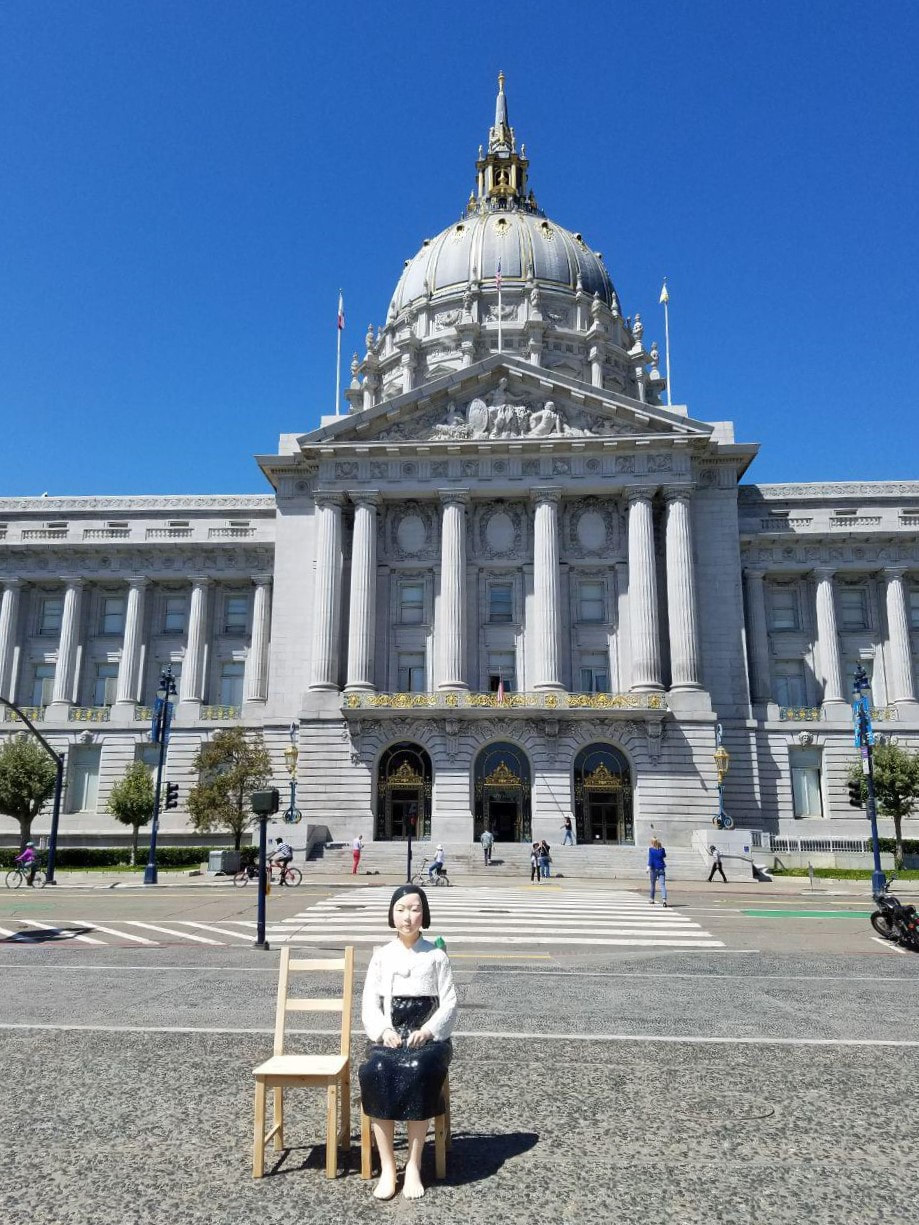Peace Girl
The Peace Girl statue symbolizes victims of Japanese military sexual slavery and other victims of sexual and gender-based violence in conflict. It also symbolizes the determination of victims to fight for justice and promote peace worldwide. The Peace Girl statue (below) is made of bronze and was first installed on Dec. 14, 2011, in commemoration of the 1,000th Wednesday Demonstration in Seoul, South Korea. With widespread public support and donations, the Korean Council installed the Peace Girl statue (also known simply as the statue of Peace) facing the Japanese embassy in Seoul. The sculptors are Seo-kyung Kim and Eun-sung Kim. What they hoped to project through the statue was the importance of empathy. The number of statues has multiplied in and outside of Korea since that first installation. The Kims feel that this might be a reaction against the Japanese government trying to revise the history of “comfort women.”
Image credit: ESJF
Image credit: ESJF
|
From left: Sung Sohn, Eun-Sung Kim (sculptor), Meehyang Yoon (former representative of the Korean Council), Mike Honda (former U.S. Congressman), an activist from Japan, Seo-Kyung Kim (sculptor). Date: Nov. 7, 2018
|
The Peace Girl statue (below) is made of synthetic resin and was installed on Aug. 14, 2017, on the eve of South Korea’s 72nd anniversary of liberation from Japanese occupation. It was originally placed on city bus seats to raise awareness. Since then, it has “traveled” to several U.S. cities, including Chicago, San Francisco, Berkeley, and Martinez (CA), and to countries such as Japan, Canada, and Germany. The statue exhibited in San Francisco in 2018 for the exhibition Truth & Justice: Remembering “Comfort Women” was sent to Canada in
2021.
2021.
7th International Memorial Day for "Comfort Women" held by ESJF
San Francisco City Hall, San Francisco, California
August 14, 2019
San Francisco City Hall, San Francisco, California
August 14, 2019
Peace Girl Statue Design Explanation
Girl: The girl represents those who the Japanese Imperial Army sexually exploited before and during WWII under a state-sanctioned system. The girl also represents other victims of sexual and gender-based violence in conflict.
Empty Chair: People can sit in the place of the victims and think, “What if she were me? What if she were my family member, my sister?”
Shadow: Despite the statue being a girl, her shadow is that of an old woman. This represents the hardships that the victims had to suffer.
Hair: The cropped hair represents the severed family ties and friendships in the lives of “comfort” girls and women.
Heels: The heels don’t touch the ground, which represents the unstable lives of the victims. They were regarded as “sluts” or “prostitutes” and stigmatized by their society.
Face: This is a face that expresses anger, but also courage and will to resolve past injustices.
Bird: The bird is a symbol of peace, freedom, and liberation. It connects those victims who ‘returned to the sky’ and the ones who are still left on the ground.
Fists: The clenched fists show the victims’ determination to speak up and tell the truth about Japan’s war crimes.
Empty Chair: People can sit in the place of the victims and think, “What if she were me? What if she were my family member, my sister?”
Shadow: Despite the statue being a girl, her shadow is that of an old woman. This represents the hardships that the victims had to suffer.
Hair: The cropped hair represents the severed family ties and friendships in the lives of “comfort” girls and women.
Heels: The heels don’t touch the ground, which represents the unstable lives of the victims. They were regarded as “sluts” or “prostitutes” and stigmatized by their society.
Face: This is a face that expresses anger, but also courage and will to resolve past injustices.
Bird: The bird is a symbol of peace, freedom, and liberation. It connects those victims who ‘returned to the sky’ and the ones who are still left on the ground.
Fists: The clenched fists show the victims’ determination to speak up and tell the truth about Japan’s war crimes.



